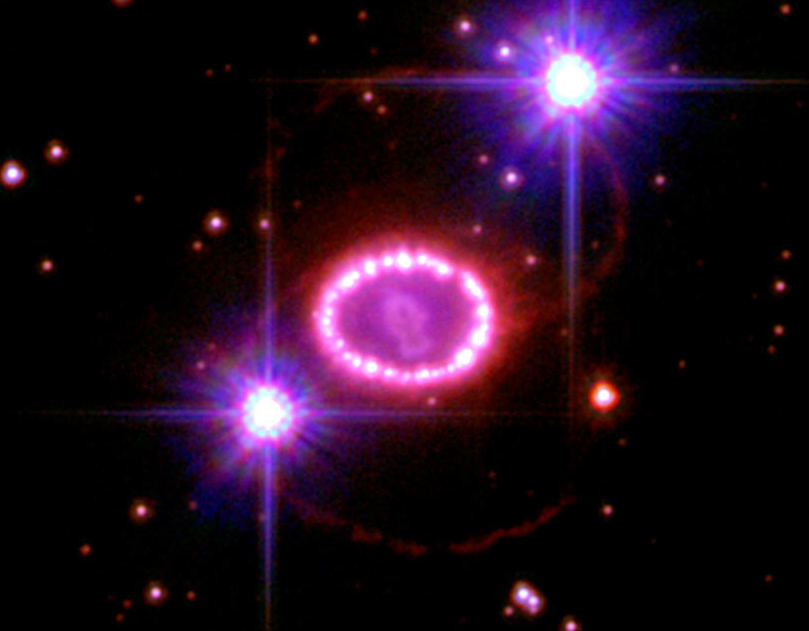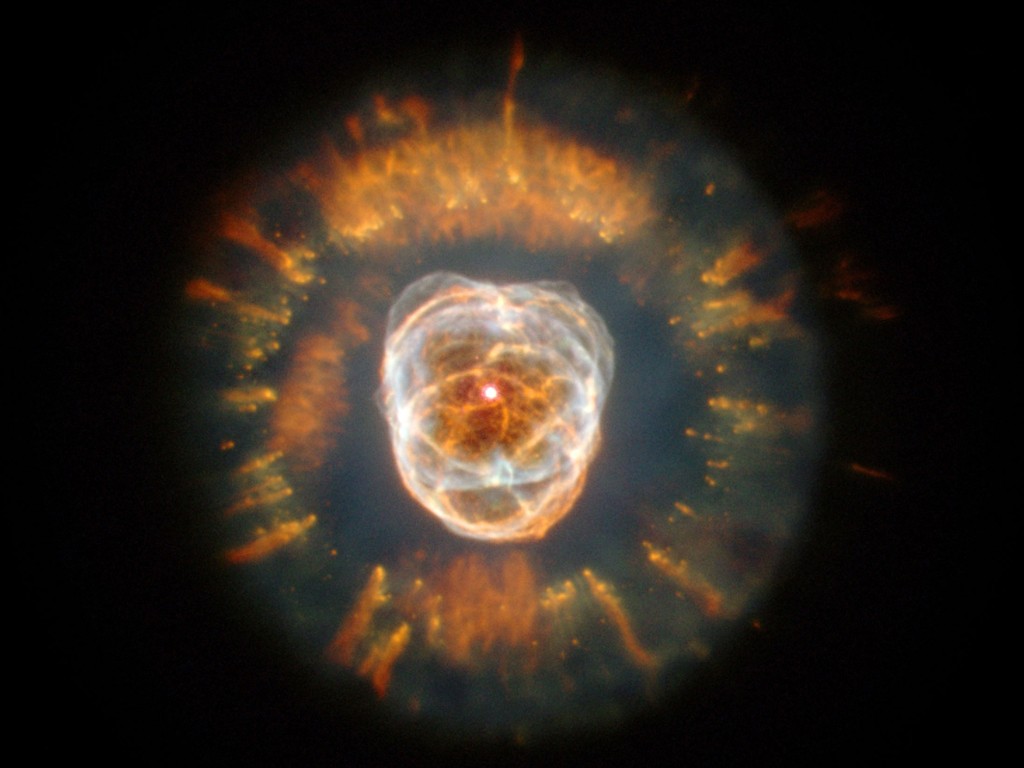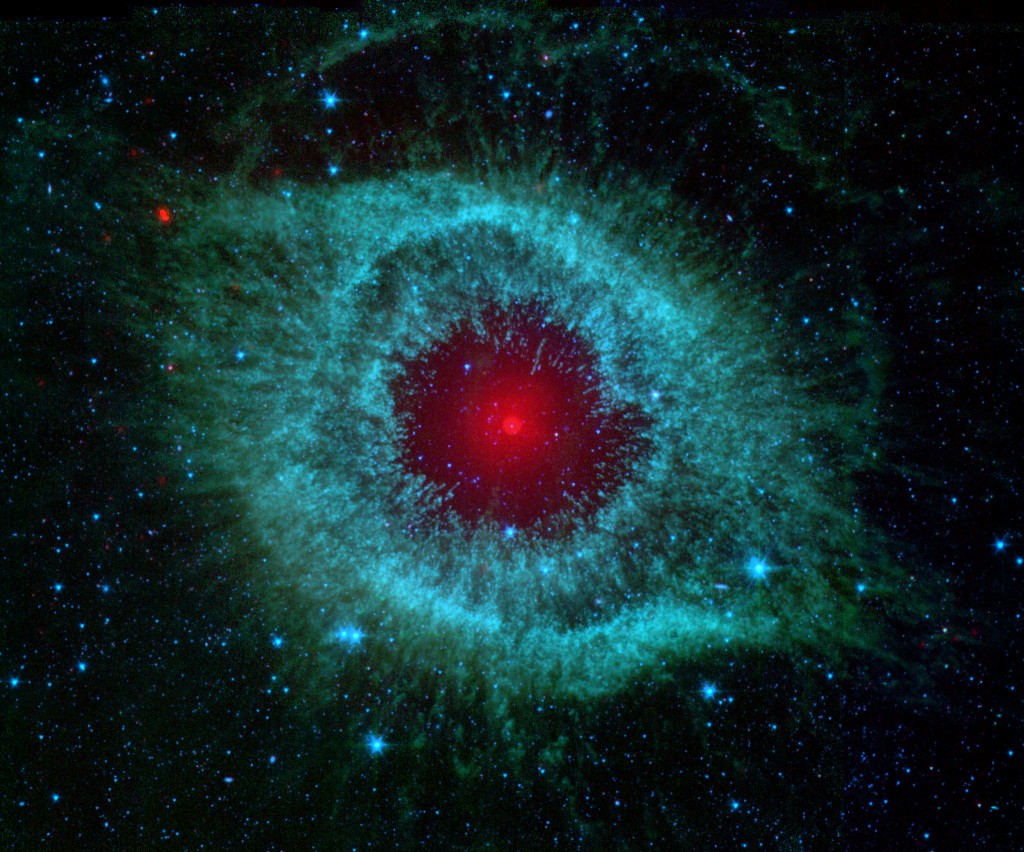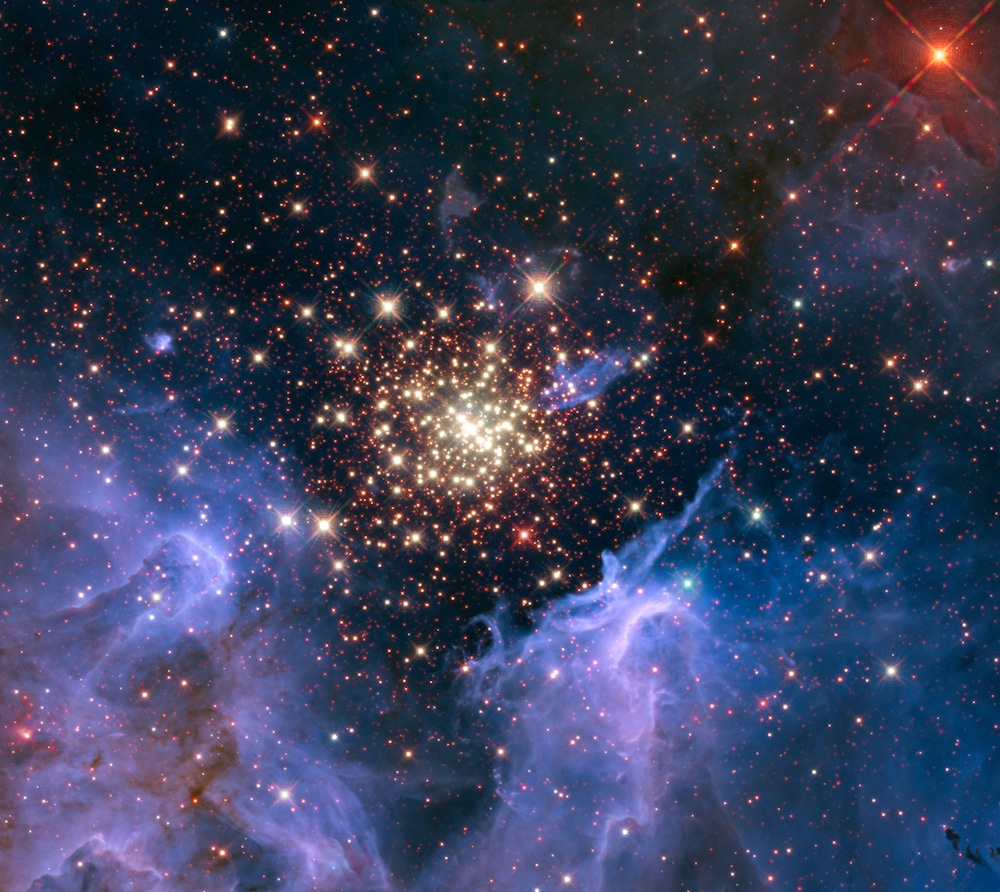Cosmic Fireworks
- By Sara Mitchell
- July 4, 2015
- Comments Off on Cosmic Fireworks
Happy Fourth of July to those of you that celebrate it! We couldn’t let the date slip by without presenting a little display of cosmic fireworks. We think you’ll find they’re much quieter than the earthly kind.
We start with this 3D visualization of the nebula Gum 29 with the star cluster Westerlund 2 at its core. Young stars light up the gas around them as we sail through:
Credit: NASA, ESA, G. Bacon, L. Frattare, Z. Levay, and F. Summers (Viz3D Team, STScI), and J. Anderson (STScI)
In 1901, GK Persei captivated skygazers as it briefly appeared as the brightest object in the night sky. Now, astronomers understand that this light show was caused by a thermonuclear explosion on the surface of a white dwarf star. This recent image of GK Persei contains X-rays from Chandra (blue), optical data from NASA’s Hubble Space Telescope (yellow), and radio data from the National Science Foundation’s Very Large Array (pink).
Supernova 1987A has put on a light show that has kept astronomers studying it for nearly 30 years. The vivid ring of material around the supernova, captured here by Hubble’s Advanced Camera for Surveys, was likely shed by the original star about 20,000 years before it exploded.
Astronomers have nicknamed this planetary nebula “the Eskimo Nebula” because they see a head wearing a parka hood. The gas clouds around this object composed the outer layers of a Sun-like star thousands of years ago. Now, a strong wind of particles from the central star is ejecting the unusually long filaments seen around it.
The Helix Nebula, another beautiful planetary nebula, has an eerie resemblance to a giant, all-seeing eye in this infrared image from the Spitzer Space Telescope. This object is what remains after the death of a small- to medium-sized star. The tiny white dot in the center is a white dwarf, the glowing red gas was blown out when the star died, and the outer gaseous layers are seen in brilliant blue and green.
A stellar nursery is a surprisingly violent and energetic place. Astronomers have a chance to peer inside NGC 3603, a starburst cluster in the constellation Carina, because ultraviolet radiation and stellar winds have blown a cavity in the gas and dust surrounding these huge young stars.







